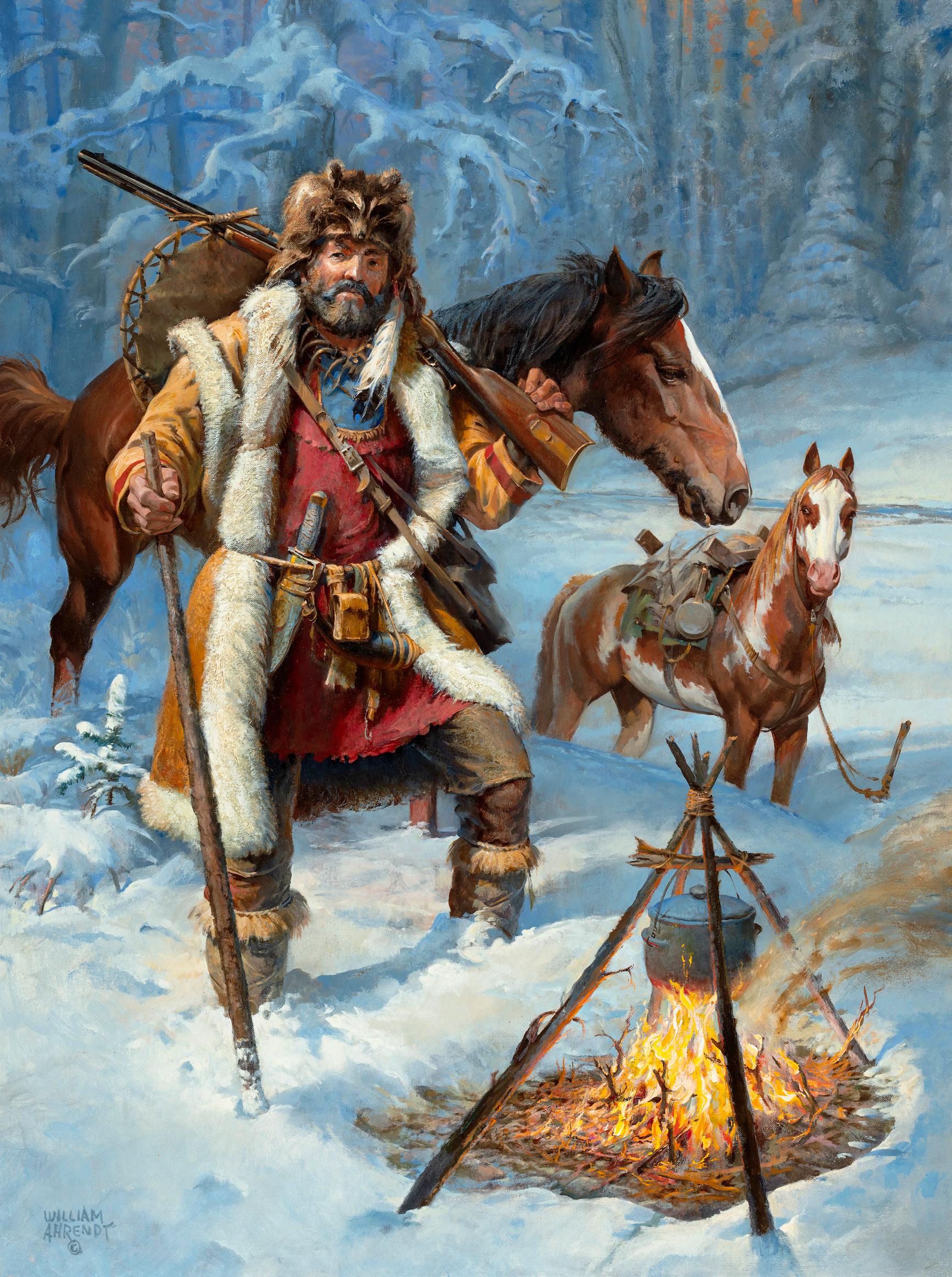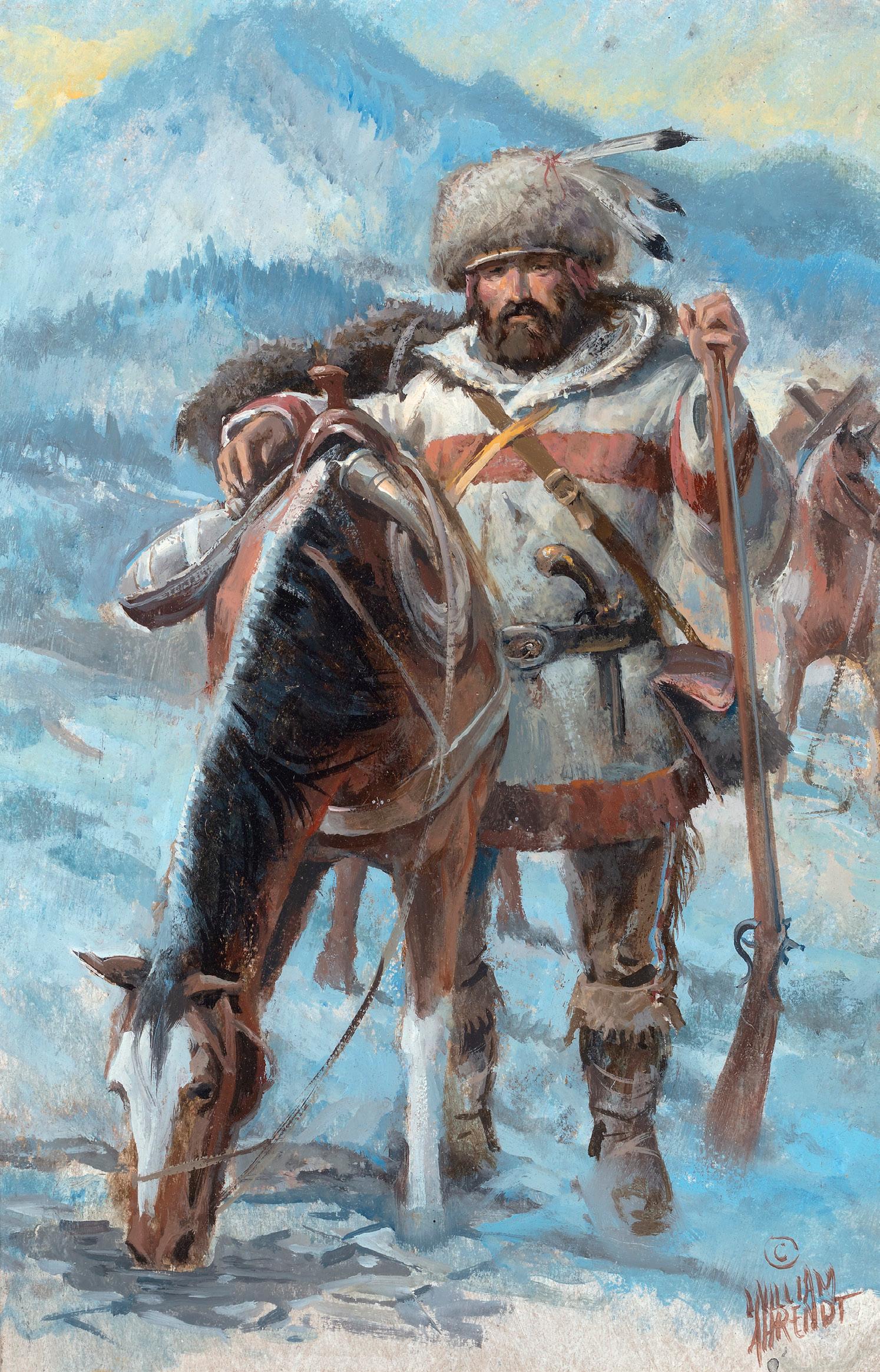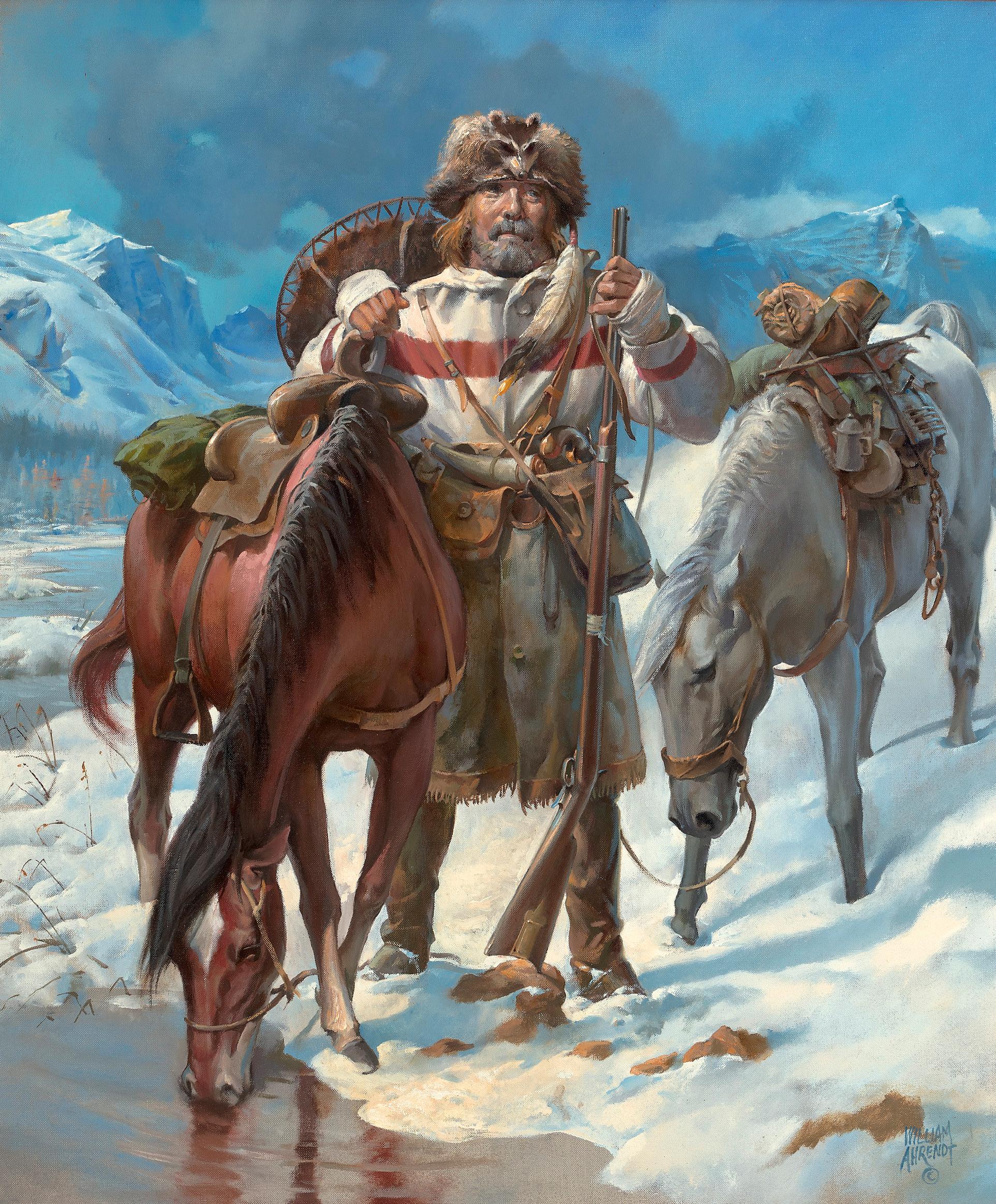
2 minute read
William Ahrendt
1933 - 0000
William Henry Ahrendt was born in Cleveland, Ohio. Apparently, Bill knew his destiny very early, informing his parents when he was just seven that he was going to become an artist. Dedicating himself to art, Bill made it his top priority through his public-school years, taking art lessons at the Cleveland Museum of Art. When his family moved to Phoenix, Arizona to care for his ailing grandmother, Bill fell in love with the western landscape.
Ahrendt went on to study at the Los Angeles Art Center School and later returned to Cleveland to study at the Cleveland Institute of Art, where he earned a Bachelor of Arts in Fine Arts, graduating magna cum laude, and won a travel scholarship that allowed him to visit all the major museums in Europe and establish a studio first in Rome and later Munich. During his 11 years in Europe Ahrendt’s primary focus was the study of the work and techniques of the Old Masters.
While in Germany, Ahrendt engaged in a variety of art related occupations, from serving as the Arts and Crafts Director for the U.S. Army in Giessen, Germany to directing the advertising department for The U.S. Air Force European Exchange Program in Wiesbaden. In 1965 Ahrendt was admitted to the Munich Academy of Fine Arts where he studied in the Max Doerner Department of Painting Technology. There he continued to study the work of the Masters and developed his painting technique that begins by mixing and applying egg tempera as the foundation before applying layers of oil paint that results in a painting that appears to glow. Ahrendt relocated to Arizona to attend Arizona State University, where he earned a Master’s in Fine Art. Following that he worked as a commercial artist in California and then as the chair of the art department at Glendale Community College in Glendale, Arizona. In 1979, Ahrendt retired to concentrate on his art and moved to Pine, Arizona, where he and his wife, Renate had built a 4,000 square foot house and studio with their own hands. A contributing editor for Arizona Highways magazine for many years, Ahrendt’s paintings and historical articles have been published in more than 40 issues.
Regarding his art and career, Ahrendt says, “My vision of art as a reflection of human life had already been revealed to me in my youth. And although I couldn’t have anticipated the circuitous path of decades that I was to follow in pursuit of my vision as a painter, I’ve never regretted a moment of the long journey. Art is not the paint alone, but a medium for communication between the viewer and the artist. If expression conveyed in a work of art is perceived by the beholder, a connection is shared that completes the work and links the artist and the viewer together. At that moment, Art comes to life. The artist and the viewer form an alliance of mutual fulfillment though the two may never meet.”
JEREMIAH JOHNSON Oil on Linen 40 x 30 inches
JEREMIAH JOHNSON Oil on Canvas Mounted on Board 13 ¾ x 9 ½ inches


JIM BRIDGER, MOUNTAIN MAN Oil on Canvas 36 ¼ x 30 3⁄8 inches










